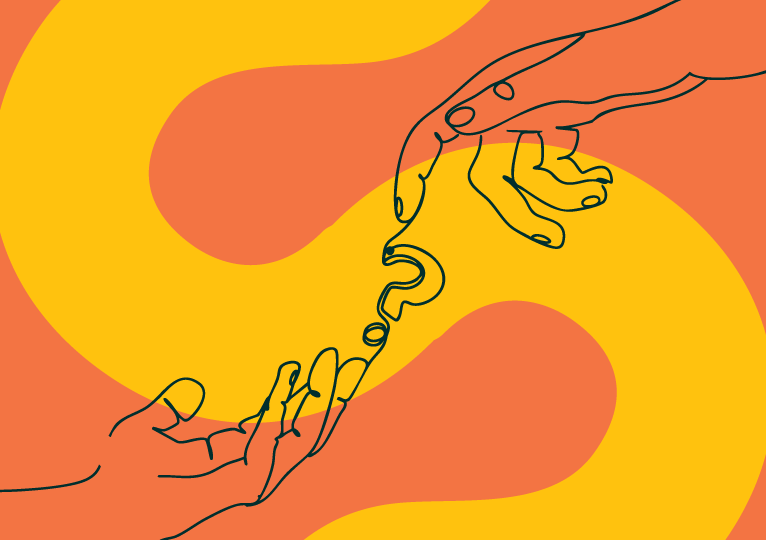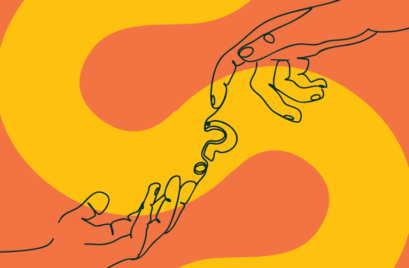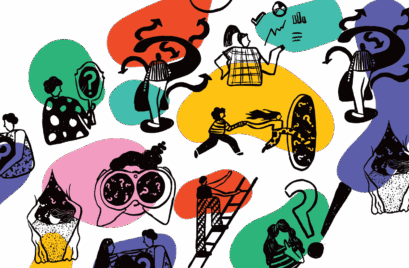
“Along with intellectual curiosity, we need interpersonal curiosity. Taking an interest in other people is the beginning of empathy.”
Adam Grant
The idea of interpersonal or relational curiosity as a leadership skill has been remarkably undervalued. When we think of being curious, we generally think of sparking ideas and innovations through enquiry. But it could be argued that it’s the other dimensions of curiosity that make the world go around, i.e., relational and self.
Previously, we’ve dipped into the nature of curiosity, how it manifests, and why it’s crucial in leadership. Here we are going a step further, diving into how we might dial up relational and self curiosity to superpower levels.
Practicing Relational Curiosity
Adam Grant’s quote speaks directly to the importance of relational curiosity by suggesting its role in how we learn about empathy. Empathy is considered not only a desirable human trait but a vital leadership competency. Studies show that there is a strong connection between empathic leaders and performance at work, particularly in cultures where power is concentrated at higher levels. (And as a side note, it’s important to recognise that feeling empathy is different to showing empathy.) This tends to mean traditional Western hierarchical organisations.
Relational curiosity is the drive to understand others through their feelings and experiences, which is the beginning of us feeling that necessary empathy. It’s the bee that pollinates the flower. Humans are born with a capacity for empathy but need social interaction to develop it. Curiosity about ourselves and others is the unlock.
So, what are some of the ways we can build this buzz of relational curiosity to enrich our empathy capacity?
Slow down
Getting curious with others takes time and a relational focus. Start thinking of yourself
as a more people centred leader and not entirely task focused.
Investigate the Lens of Others
The answers to your questions might require a perspective stretch, and your first
step to leading with empathy is by stepping into someone else’s world-view. This should
not be interpreted as weakness or inaction. It is in, in fact, a superpower.
Seek to Understand Motivations Not Outcomes
Instead of focusing on another’s actions, ask how they approached a task or what
they found interesting about it.
Hold Judgment
Learning about how others think and feel is bound to challenge your own way of looking
at the world. Consciously suspend your judgment to hold a safe space for them and
their perspectives.
Build Curiosity Rituals
Be creative and consistent with how you check in with your team. Celebrate
questions that open insights, not just offer answers. Consciously create a culture of
inspired curiosity.
Practicing Self-Curiosity
And while these are helpful tips, it’s equally important to realise that your ability to effectively practice relational curiosity will be impacted by how adept you are at self-curiosity. We’ve all heard many times that leadership begins with self; so, it makes sense that internally-focused enquiry is the activator of that notion.
Try some of these practices:
- Check Your Assumptions: In the act of holding judgment, you might need to examine your quick, automatic assumptions that are almost reflexive in nature. Don’t strive to be right, but to get it right. This might mean more time, more questions, and more empathy.
- Reflect on Your Curiosity Habits: What do you tend to ask about, and where are the gaps?
- Be Mindful When You’re Curious: How is your body reacting to your enquiries? What’s it telling you? Are you comfortable? Feeling Awkward? Bored? In threat?
- Invite Feedback on How You Enquire: Are you too direct resulting in intimidation? Are your questions clear? Is your VIBE inviting?
What Curiosity Brings
Whichever dimension of curiosity you are employing as a leader; intellectual; relational; self; you may experience certain reactions of your own. For instance, being curious can be uncomfortable if you aren’t well-practised in it, or it can take you somewhere uncomfortable. Opening to another’s perspective may feel like unsteady ground. In these moments, mindfulness is your ally. Think: “I’m here to understand, not to agree or fix.” You can also use pauses to metabolise a conversation by simply saying, “I need a moment to think about that,” or, “That’s a lot to take in, can we come back to this soon?”
It can also be helpful to create your own curious checklist of ways to approach building a habit of deeper, people centred enquiry. Here is an example:
- What’s my purpose? “I’m here to understand and connect, not to win or resolve.”
- What kind of VIBE do I want to bring, and what does that look like? E.g., Calm, open, respectful.
- What assumptions do I hold that I might need to examine or suspend to truly hear what’s being said?
- What embodied action will help me stay grounded if the conversation becomes tense? E.g., slow breathing, feet on the floor, unclench hands.
And remember that relational curiosity is a mindset and a tool for leading people. AI will not offer the same insights, nuances and emotional responses as your team. While it might be tempting to get the quick answers and data from technology, the deeper more potent answers reside in people.







